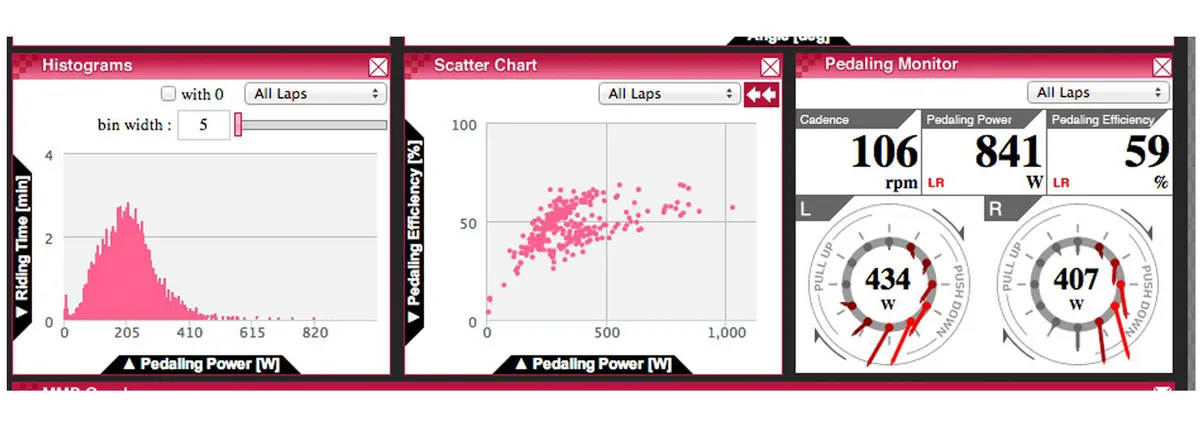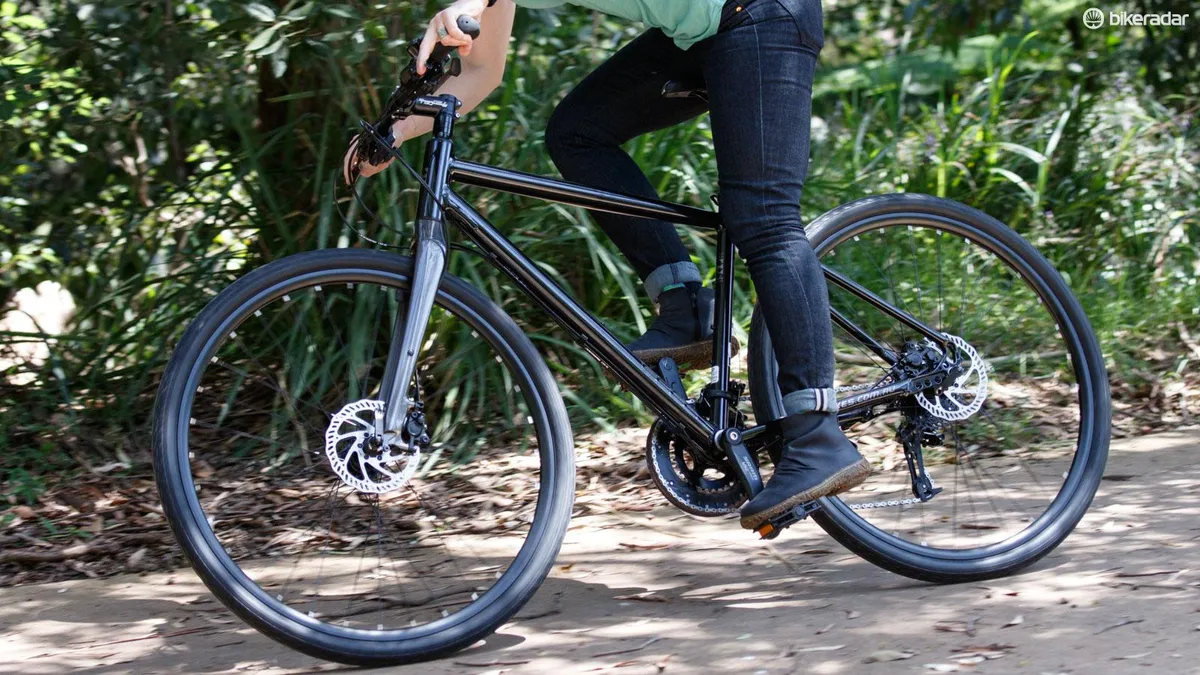Your wheels are round. Your cassette is round. Your chainrings are probably round too. So it makes sense that your pedal stroke should be round. Or does it?
Duncan, a long-term client of The Body Mechanic, recently finished a Sydney-based 50km mountain bike event in the same time that he rode two years ago, which happened to be pretty much the same time as the year before that.
Why is this remarkable? Not because of the fact that Duncan is well on the wrong side of 40. Nor because it was achieved despite the significant degenerative changes in his lower back, or his 18-month history of chronic hamstring issues.
The reason this is worth mentioning is that three months ago Duncan ditched clip-in pedals and cleats in favour of flat pedals for all eight of his bikes. Not only have his hamstring and lower back symptoms improved significantly while riding, but, Duncan notes, "I actually climb better without cleats, probably because I am not knackered when I get to the bottom of the climb!
"In addition," he adds, "I was able to corner much faster on the fire-road sections, as I was able to step out with my foot where the cross country racers were washing out and leaving the road."
Surely there must be some mistake. This defies logic, doesn't it? How can Duncan be fresher at the base, and climb just as well (if not better) when he has lost all of the benefit of the upward 'pull' through the back of the pedal stroke? What does this mean for the scores of riders taught to unclip one foot from their pedal, labouring around using just the left, then just the right leg in an attempt to hone and perfect a smooth pedal stroke?

In 1997, French researchers placed force transducers onto the pedals of a group of cyclists, measuring the force going though the pedal at every two degrees of the pedal stroke. They found that the downstroke produced 'positive torque', with 'negative torque' being produced through the back of the pedal stroke (an 'uplift'). However the surprising result was when they removed the cyclist's toe clips… and the results remained the same*.
But is this a surprise? When you last rode your bike with flat shoes, or your pub cruiser / fixie, did your foot keep lifting off the pedal through the back of the stroke? Do your cleats actually allow you to add more power through the back of the stroke or simply make you feel like you have better contact with your bike?
Think of a 'smooth' pedal stroke not as a circle, rather as a coordinated transition of power from one leg to the other. The most efficient cyclists tend to be those who remain stable in the saddle while rapidly alternating power from the downstroke on one leg to the other, especially if they can do this at a high cadence. In fact, if you focus on particular phases of the pedal stroke whilst riding (the uplift, the pull across the bottom of the stroke) chances are you are inadvertently impeding the downstroke on the other leg.
With that, below are my recommendations for an efficient pedal stroke.
Do cadence work

Devote at least some of your riding 'sessions' to high cadence work. This is often good to undertake at the start of your efforts / session, as the skill you are learning will assist your pedal stroke to remain smooth and efficient at any cadence.
Leg speed drills
If you had a hard ride session planned, include some high cadence intervals as part of your warm-up, or even perform some leg speed drills during a long ride (for example 3x3 minute intervals at 105rpm, with a minute between).
Perform the efforts in the small chainring with your focus on leg speed, rather than bike speed. You will find your legs warm up but don't get tired, and you will also note your breathing and heart rate rise, but recover quickly.
Stay stable
Maintain a stable pelvis while pedalling. You'll find that your early attempts at high cadence work will have you bouncing up and down on the saddle (certainly enough to make talking to your riding buddies difficult!).
Undertake your next few leg-speed intervals at the same cadence (such as 105rpm), but aim to remain more firmly planted in the saddle, with your pelvis acting as a foundation for your legs. This will allow you to maintain chain tension through the entire stroke, eliminating the 'thud' through the top and bottom of the stroke (the 'dead zones') as your chain loses contact with the freehub. As well as improving your pedalling efficiency it will also make conversation easier!
Go flat

Ride a bike with flat pedals at least once per week. By removing the ability to draw up through the back of the stroke, you will need to maintain a smooth pedalling action. This will be a much better training strategy on a geared bike, allowing you to maintain the high cadence integral to improving your smooth stroke.
While you’re on the flats, take the time to practise skills you’re too nervous to otherwise. Learn to trackstand or emergency brake.
Stop it

Simply, stop doing one leg pedal stroke drills. This is something that goes against the advice of many coaches, but I do believe in it.
The Body Mechanic series on BikeRadar covers topics from bike fit to injury prevention to how your component selections actually affect you. The Body Mechanic is a Sydney-based physiotherapy, bike fitting and cycle repair workshop established in 2008 by physiotherapist and former New South Wales elite state road cycling champion Blair Martin.
*Reference: Colson, E., "Power to your Pedals", BA Magazine, 100 - 101, August 2002